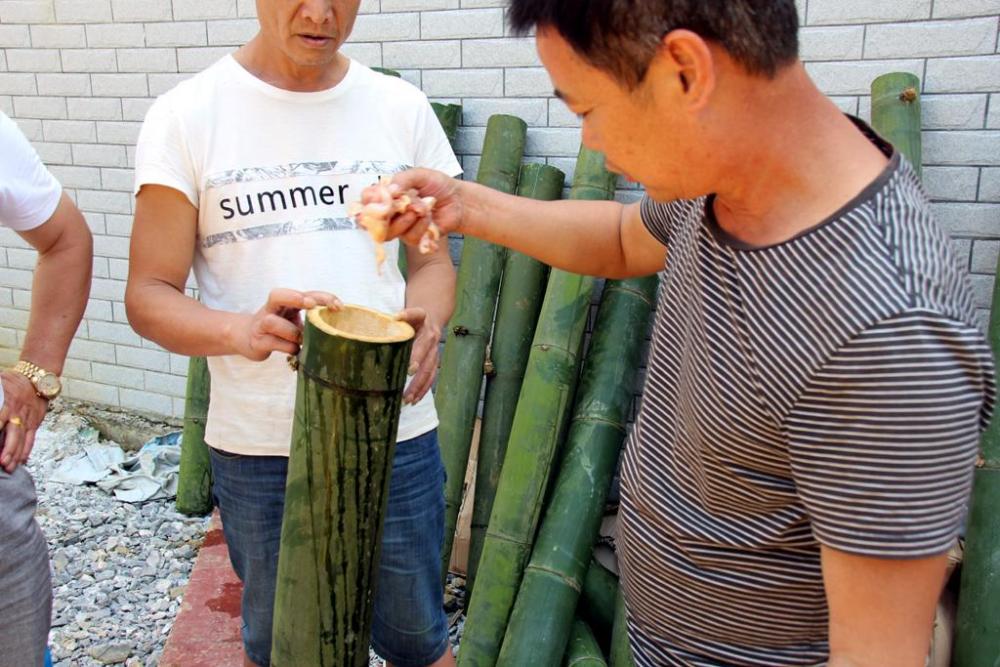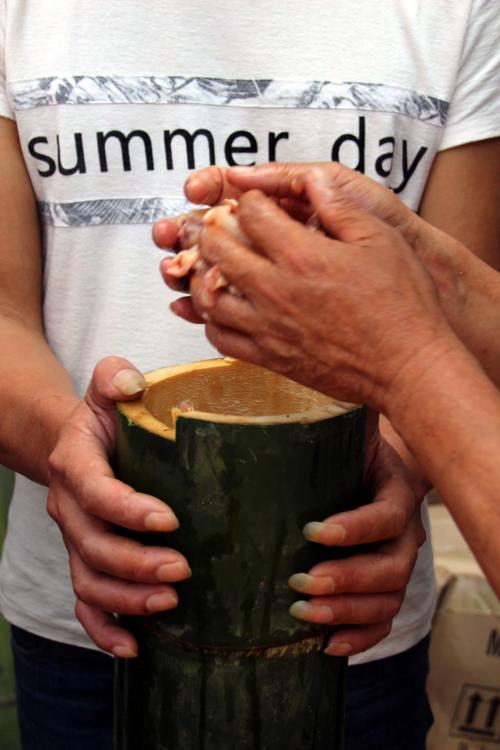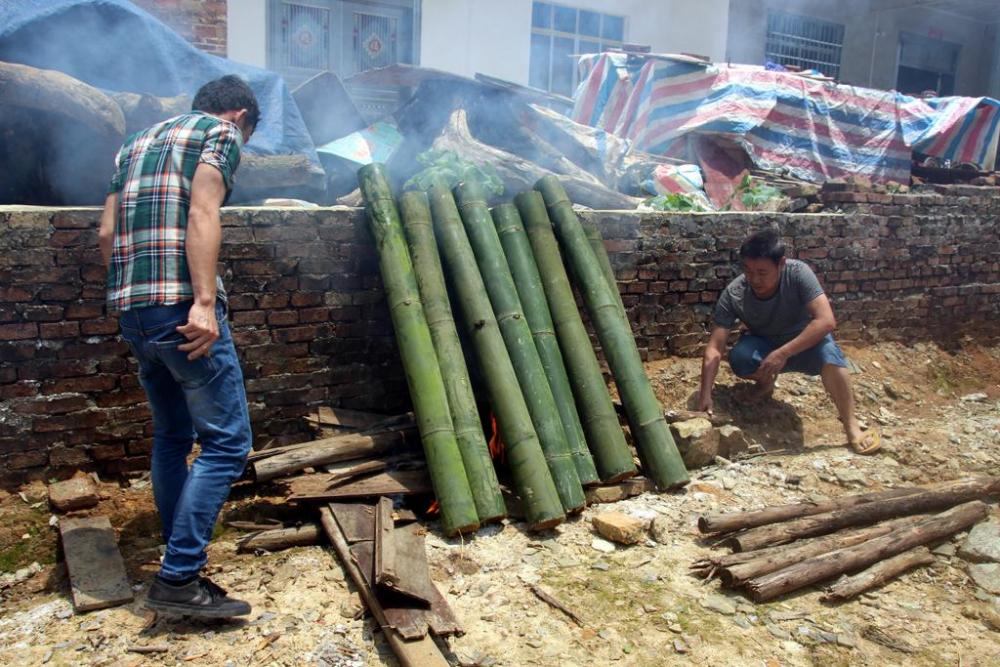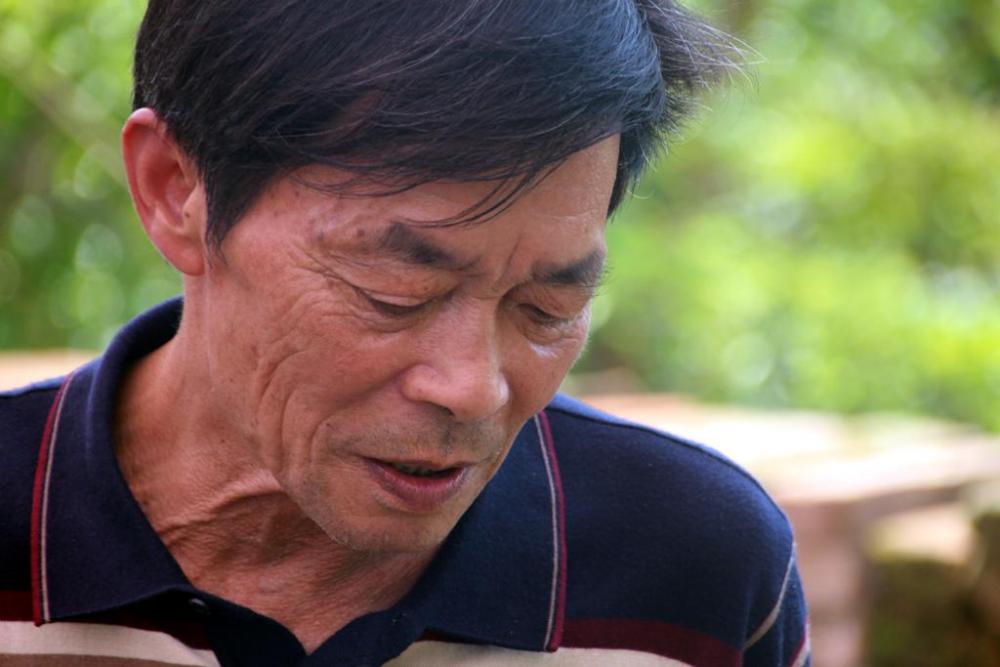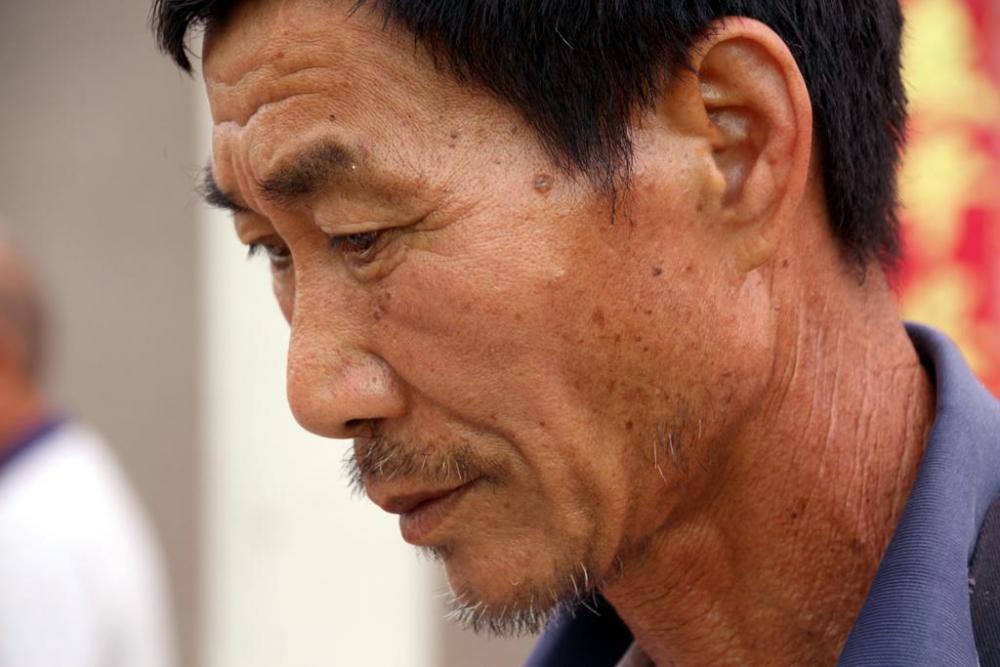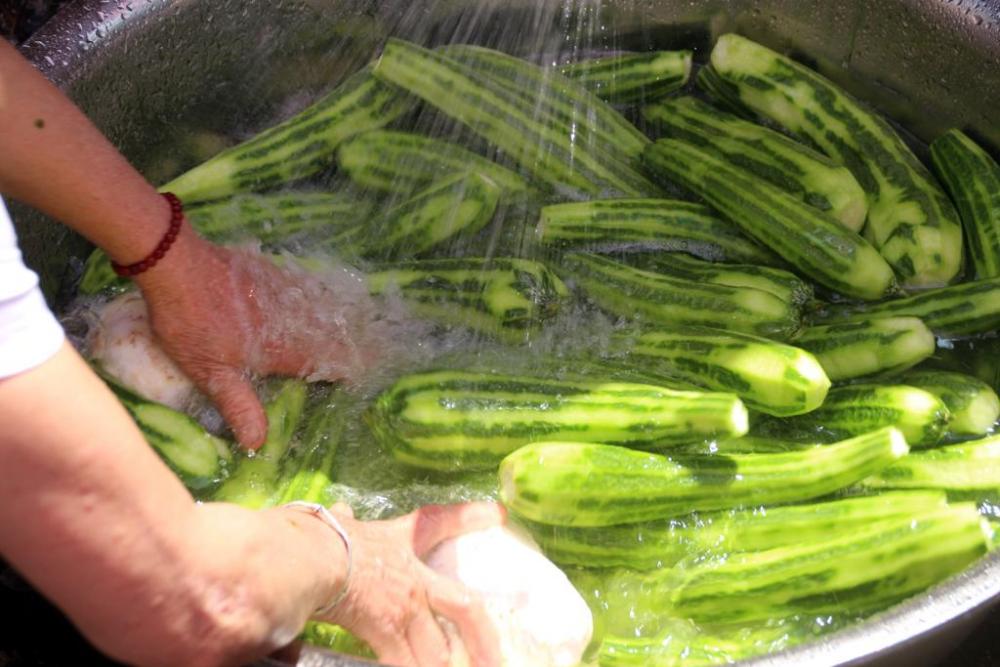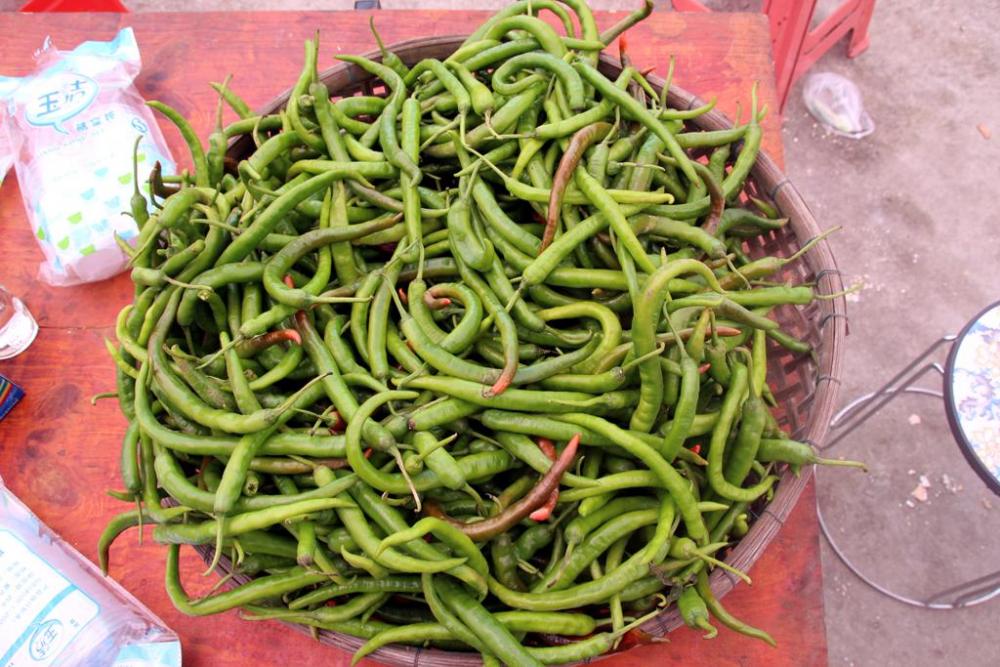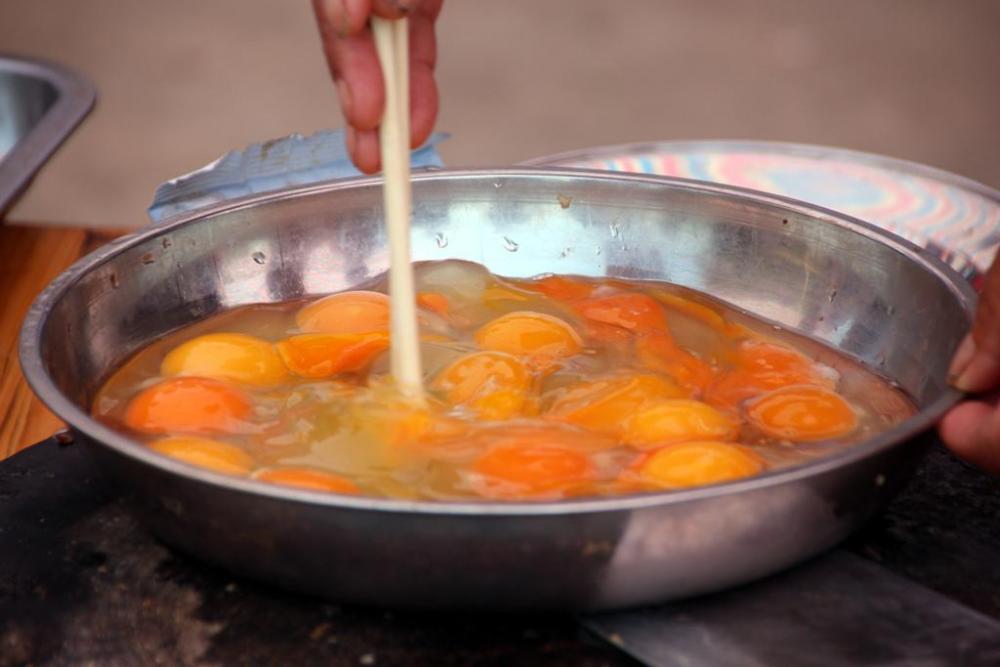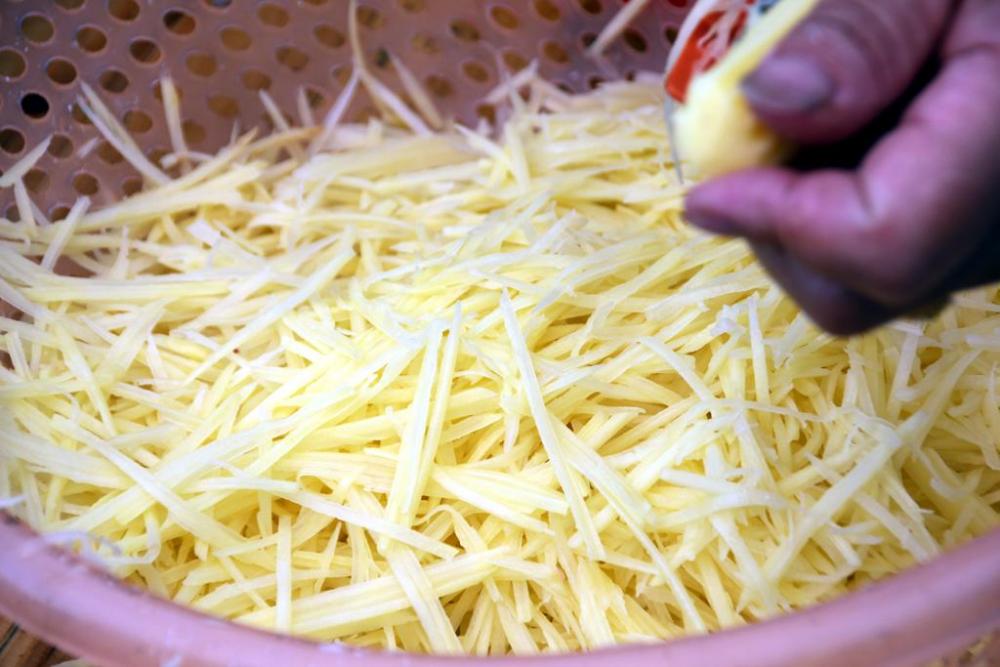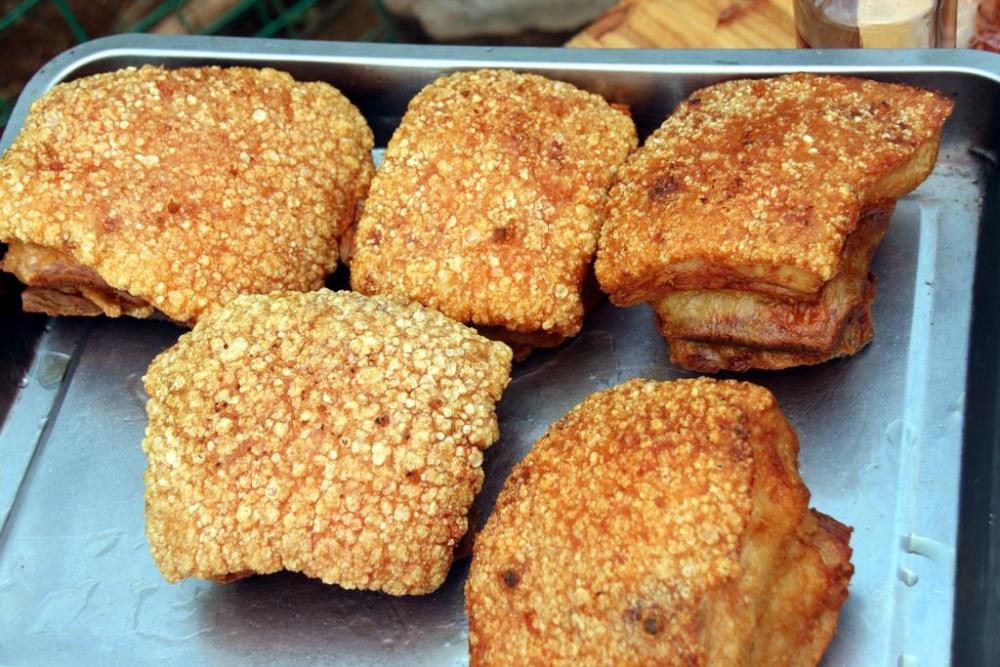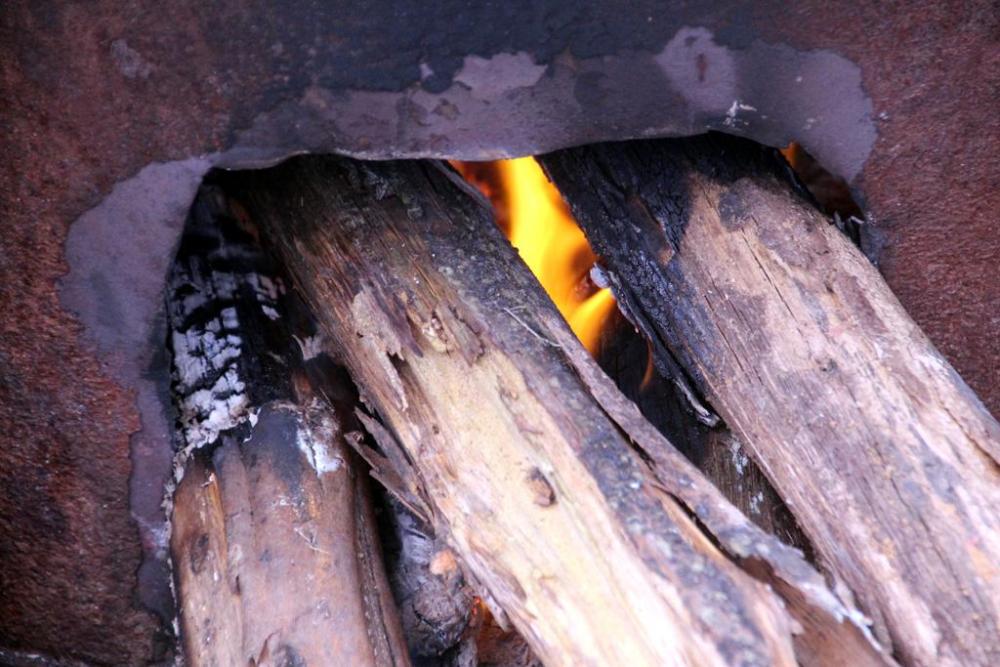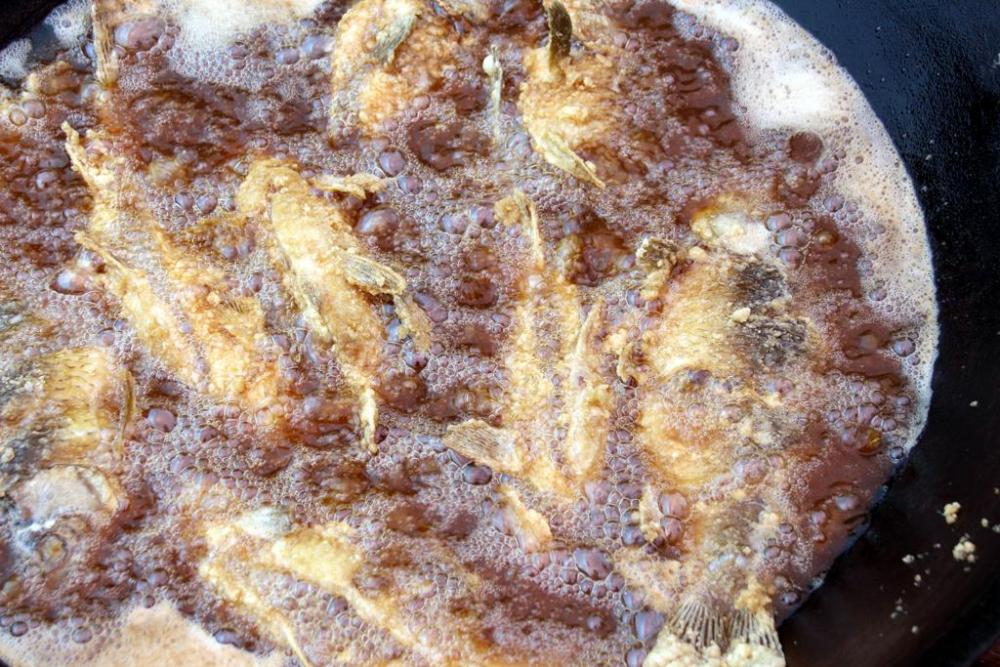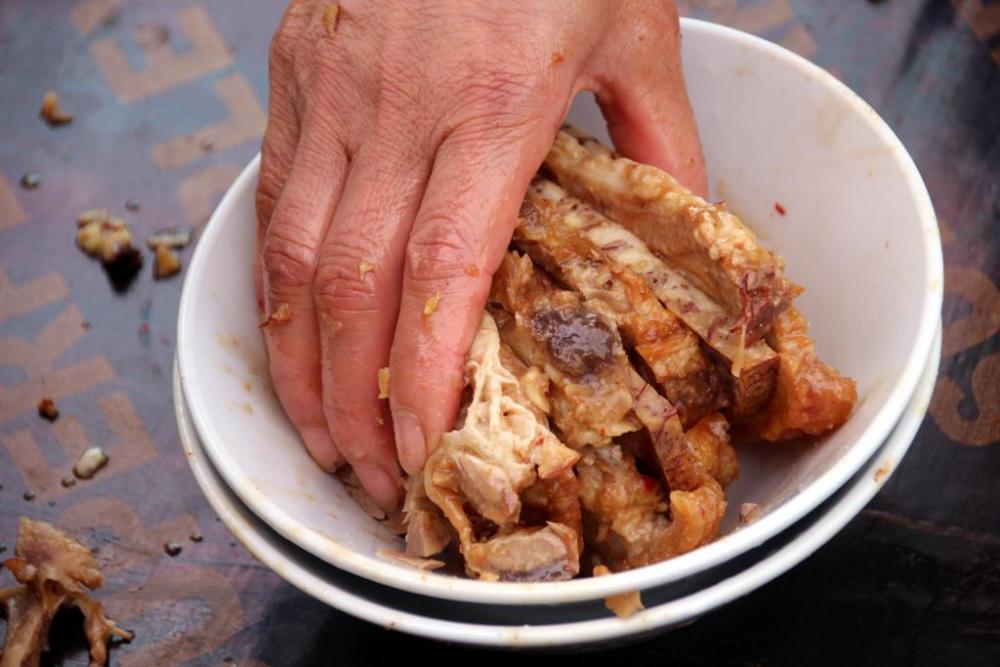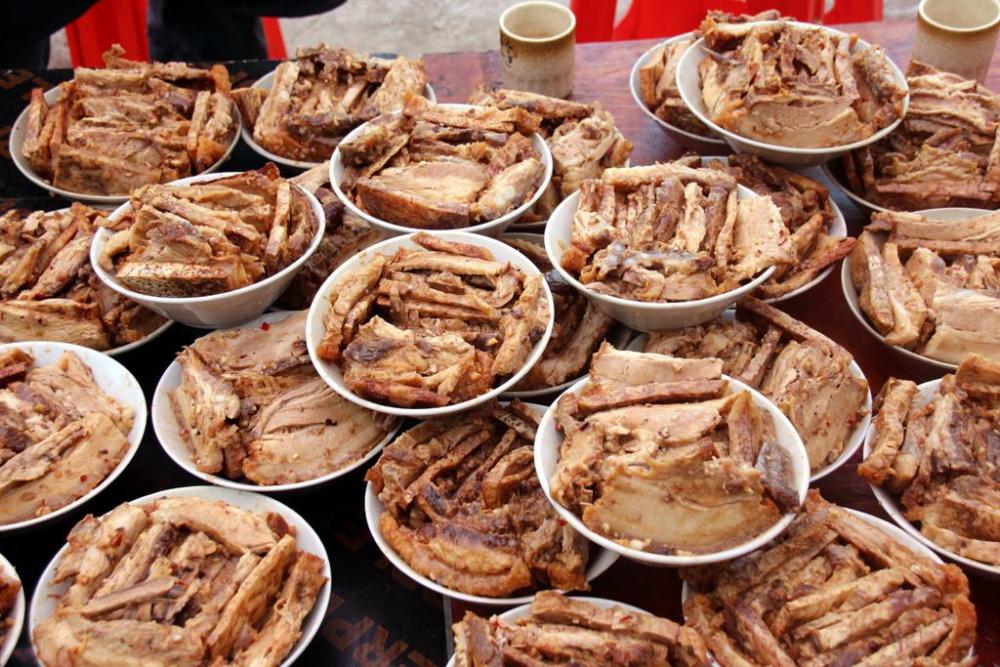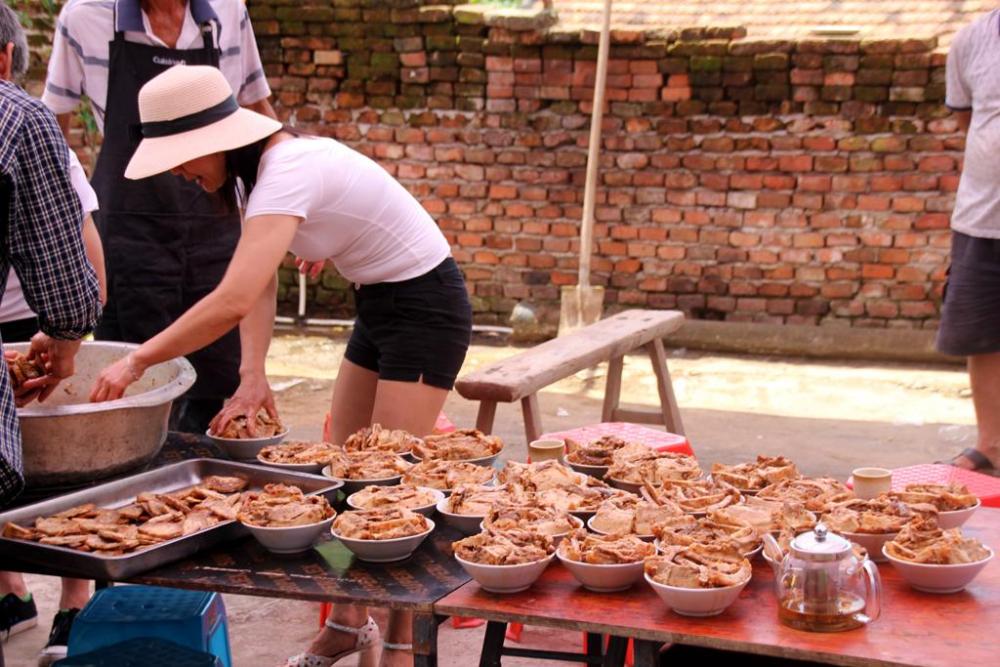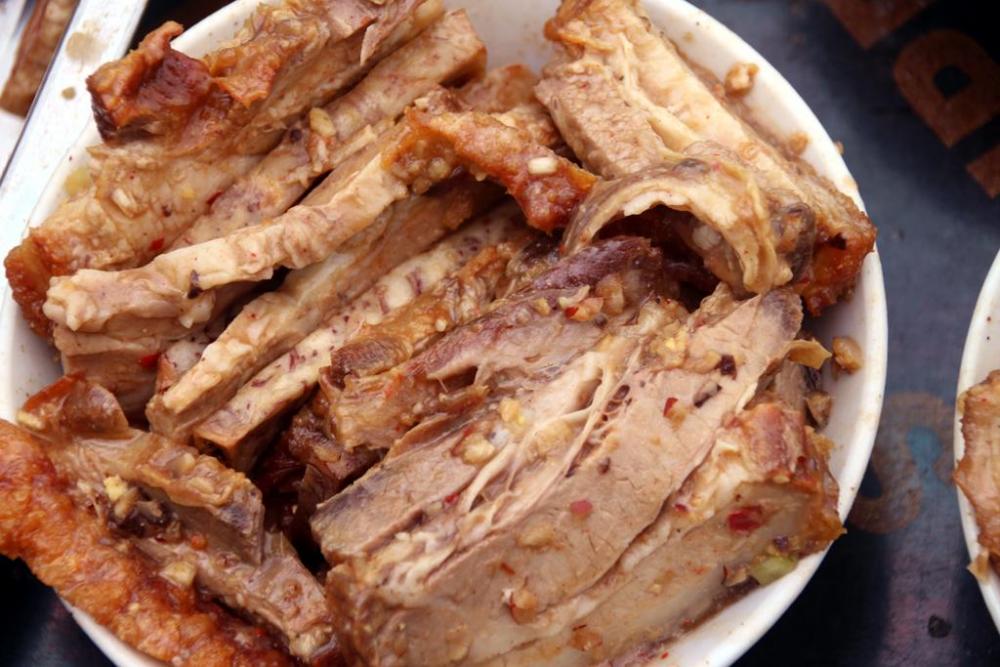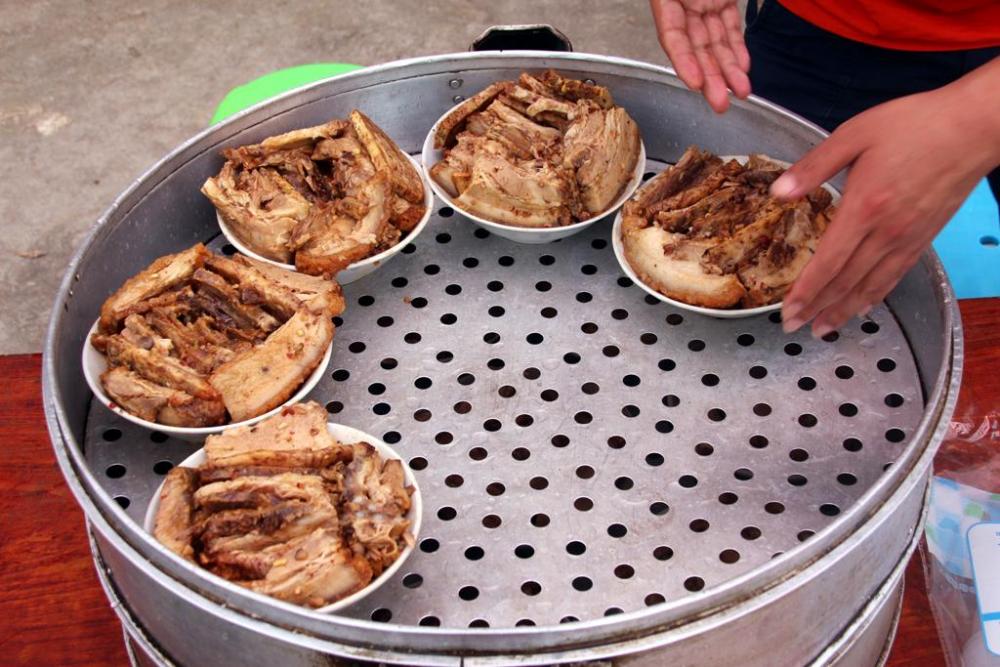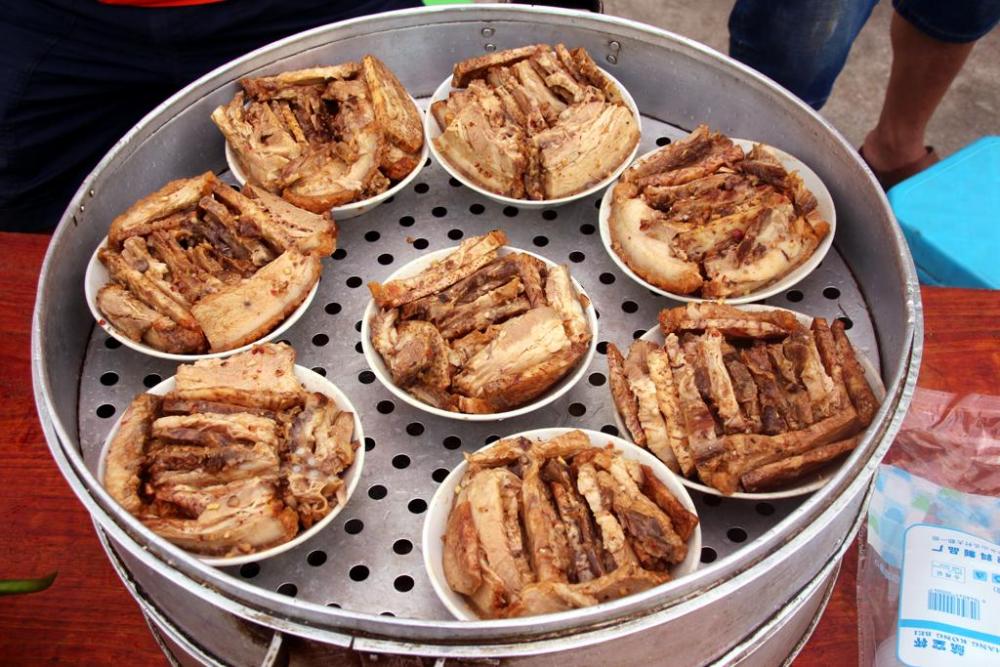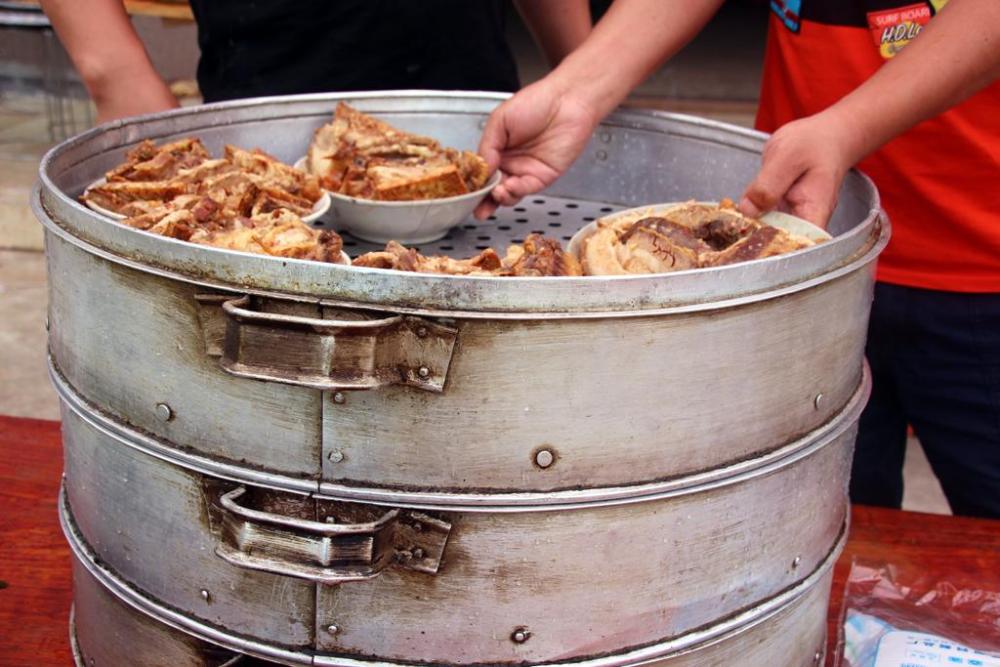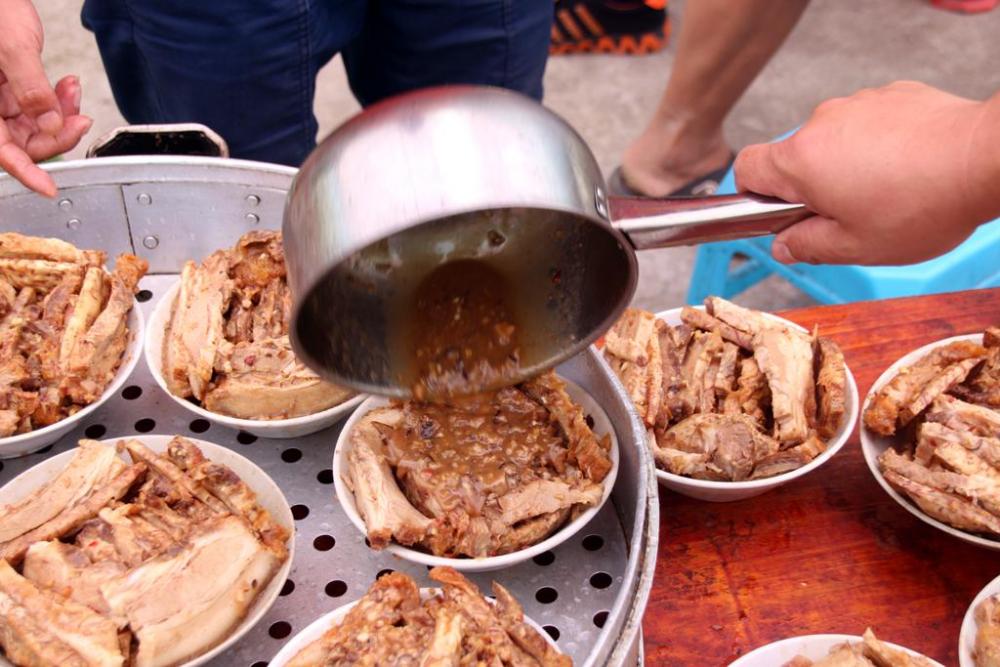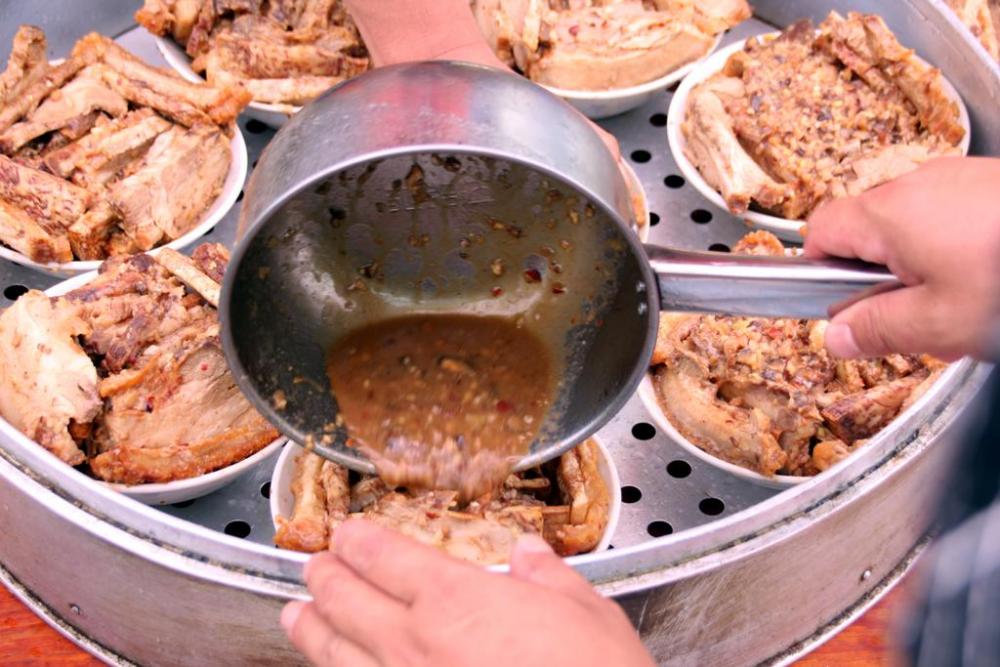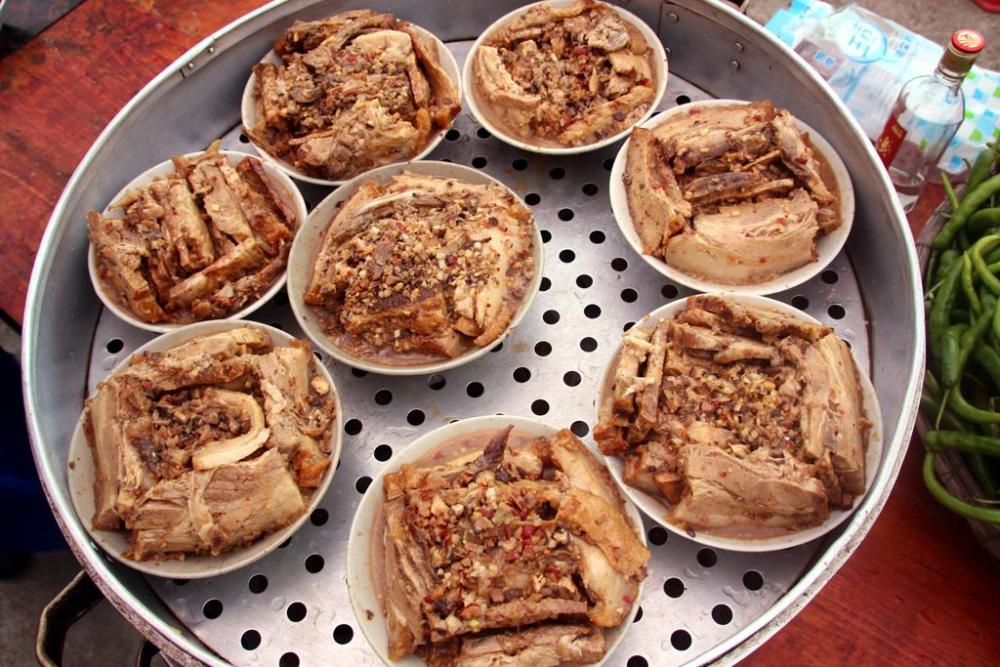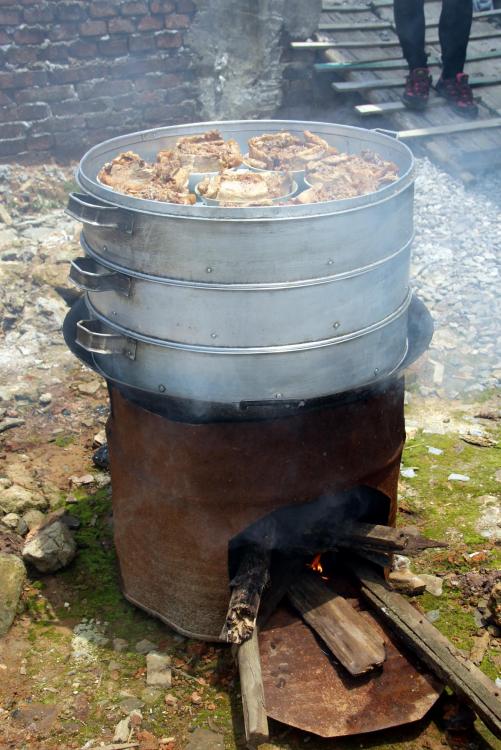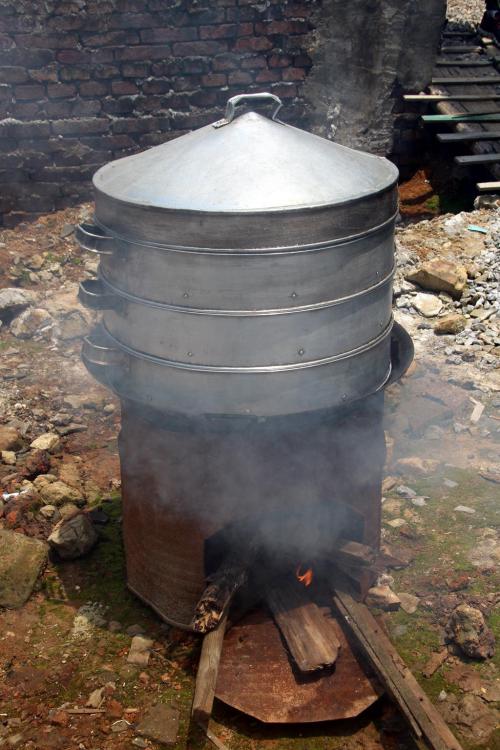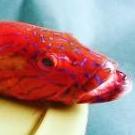That chopped chicken, or a good part of it, is shoved into the bamboo pipes along with water and that mystery ingredient. It is identified to me as 草鞋板 cǎo xié bǎn (which translates into the meaningless "grass slipper plate". A little research suggests it is dried Hoya Carnosa, a flowering house plant most places, but seemingly used, albeit rarely, in Chinese Traditional Medicine. Whatever, handfuls of it are rammed down the pipe.
The chicken, water and herb filled bamboo tubes are lined up leaning against a wall and a fire lit beneath them.
While, all of this is going on, the two lunch masters making an inspection of the various preparation sites.
Fancy an omelet?
Potato Slivers
The boiled pork belly is now deep fried.
The fish are rubbed with soy sauce, garlic and ginger then dredged in flour and deep fried
Then left to rest
The boiled then fried pork belly is sliced then assembled in a bowl with alternate slices of fried taro. This is 扣肉 kòu ròu (literally "bowl meat"), a local favourite.
The assembled bowls are placed in huge steamer racks ready for stage three of the cooking.
It is at this point the "kou rou" master notices a critical error. The person stacking the bowls in the steamers has forgotten to add the sauce, so they all come back out while the master illustrates the correct procedure and they start off all over.
Finally, they are deemed fit and set to steam for one hour.
Time for a beer


